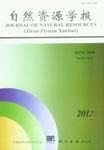CHEN Shao-yong, WANG Jin-song, GUO Jun-ting, LU Xu-dong
Using over years daily surface extreme air temperature and NCEP/NCAR data of 135 meteorological observation stations in Northwest China from 1961 to 2009, and adopting the methods of linear regression analysis, Mann-Kendall, moving t-examination, wavelet analysis, power spectrum and composite analysis, we analyzed the evolution characteristics of high temperature event in recent 49 years of Northwest China. The results show that spatial distribution of the extreme high temperature in Northwest China presents high value in the western and eastern parts, and low value in the central part. The main areas with extreme high temperature value are located in most part of Xinjiang, the western Hexi Corridor, the central and northern Gansu, southeastern Gansu, northern Ningxia and Shaanxi. The threshold values of the extreme high temperature in these areas are above 30 ℃; but in most part of southern Xinjiang and local areas of southern Shaanxi (Xi’an, Ankang), the threshold values are above 35 ℃, the max-value is 41.5 ℃in Turpan. The annual extreme high temperature is generally low in Qinghai Plateau, and high in Qaidam Basin(25-30 ℃), the other areas are between 15 ℃ and 20 ℃, the min-value is 14.4 ℃in Wudaoliang; the frequency of annual extreme high temperature has obviously increased at a rate of approximately 1.8 d/10 a. The high temperature days changed from less to more in the metaphase of the 1970s, especially the increasing rate is 5.4 d/10 a from the end of the 1980s, and there is an abrupt change phenomenon in 1994. The high temperature frequency has the remarkable periods of 3 to 5 years in recent 49 years. At present, it is still in the frequent phase of high temperature occurence; the annual extreme high temperature becomes more and more frequent in the majority areas of Northwest China. The main significant areas with SE-NW trend are distributed in two banded regions. One is from the Qinghai Plateau to West Tianshan, another from northern Shaanxi, southeastern Gansu-Gansu Corridor to Xinjiang’s Altay. These areas tendency rate is above 2 d/10 a. The high value zone which reached above 5 d/10 a at west Hexi and the Xinjiang-Qinghai’s southern border area. This shows that in the background of global warming, extreme high temperature event occurrence is more frequent in Northwest China; the values of the extreme high temperature are between 22.5 and 47.8 ℃, the maximum value appears in the Turpan Basin, and minimum value appears in Qinshui River of Qinghai Plateau, the high temperature that above 35 ℃appears in addition to the Yili Valley of most part of Xinjiang, Qaidam Basin, Hexi Corridor, central-northern of Gansu, southeastern Gansu, Ningxia, Shaanxi, and in southern Xinjiang, the high temperature is above 40 ℃; due to influence of altitude the extreme high temperature is obviously low in Qinghai Plateau, the values of most areas are between 25 ℃and 30 ℃, dropped from north to south. The high temperature may appear from April to October, and from June to August it accounted for 93% of the whole year; the frequency of high temperature increases obviously in June and July, and the rest of months is not obvious. There is an opposite geographic distribution between high temperature intensity and the extreme high temperature, namely the areas of the extreme high temperature is accompanied with lower high temperature intensity, so is the distribution of variance of the extreme high temperature. It shows that extreme high temperature interannual changes is smaller in high-heat area. There is most closely relation between annual extreme high temperature and annual high frequency, followed by July, June and August. Therefore, the stronger of high temperature, the more continued days. From the interdecadal change, the high temperature frequent occurrence phase is also the phase of the strongest high temperature, the global warming makes the extreme high temperature events increased and the intensity enhanced. The atmospheric circulation composite analysis indicated that it is beneficial to form the wide range and long-enduring high temperature weather in Northwest China when the Ural Mountain high ridge, the low trough of Balkhash Lake and the Mongolian high ridge are stable, and the atmosphere is at the quasi-barotropic state.
